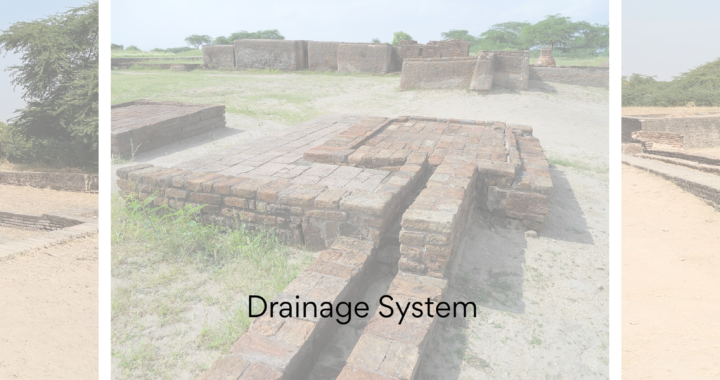
Harappan people placed high values on the 3 things.
City Planning
One of the great features of the Harappan society was their city planning. It shows their advanced knowledge of infrastructure and development. Harappan cities were usually hundreds of km apart but still there were able to maintain uniformity. Every single Harappan city found so far has the exact same ratio for the bricks.
The main streets usually run north to south and east to west. These generally divide the settlement into blocks. Sometimes narrow lanes ran off the main street so cities were not following exact grid patterns.
Every Harappan settlement was surrounded by walls built of very high strength to protect against the flood rather than enemies.
Inside the wall, the settlement divides into two parts
- Citadel – The citadel is usually built on a high brick platform and physically separated from the local settlement. They contained public buildings like ware houses, a great bath in the case of Mohanjodaro.
- Local town – Here you found the houses of the people and maybe the local market.
Houses
- Harrapan people lived in different size houses.
- Mostly consisting of rooms arranged around a central courtyard.
- Doors and windows generally faced the side lanes and rarely opened onto the main streets.
- The view from the lane into the courtyard was blocked off by a wall.
- Some houses were separated from one another by at least a foot of space between walls.
- These narrow lanes are bricked up on either end obviously to prevent robbery.
- Some houses are multistoried and staircases were there to reach Upper Storey. Sometimes they also used wooden ladders.
- Floors were usually made of hand-packed earth often replastered or covered with sand.
- The ceiling was over 3m high. Roofs would have been made of wooden beams covered with reeds and packed clay.
- Door and windows
- Woods and mats were used to make the doors and windows.
- In the larger houses, the passage led into the inner rooms. There is also evidence of the frequent renovations.
- Sometimes small houses attached to the large houses suggested that may have been the quarter for service groups working for a wealthy family.
- Kitchen
- Harrapans were using the courtyard for cooking but sometimes the side room was used.
- In large buildings, the kitchen was found with a series of brick channels to contain fuel over which cooking utensils were placed.
- In the floor sometimes pottery vessels have been found sunk into the floor to receive wastewater.
Sanitization
Harappan people were very much aware of the importance of sanitization for leading a healthy life. They had the world’s most advanced drainage and water supply of their time. The bathrooms and the toilets are the basic requirements of every human still we hesitate to talk about them. Harrapans were the world’s first civilization to put emphasis on it.
The drainage system in Harapan home
Bathroom
Every Harappan home had a dedicated bathroom for daily use. Some homes even had a bathroom on the first floor. They used watertight bricks to make the bathroom floors. Some bathrooms even had a staircase, so someone would pour water from the top like man shower.
Bathroom drainage
These floors sloped towards a small drain usually cut into the house Bathroom, if the house were multistoried then water drains were often built inside or along the side of the wall without soaking the people below. They brought dirty water out of the house and into the main sewage system underneath the main street.
Toilets
Excavation shows that almost every Harappan house had a toilet. Most of the time toilets had a big pot sunk into the floor unlike the toilets in Mohenjo-Daro even had a seat.
Toilet Drainage
Waste from the toilets was directed into the drains. Underground drains led to large brick soil tanks and clay pots which acted as septic tanks even more they were fitted with manhole covers to allow for periodic cleaning.
We have never found such a complex sanitation system in any other ancient civilization. Europe developed it 4000 years later.
Water Management
Harappan people were mostly farmers so they knew the importance of water in daily life. Harappans built their cities alongside rivers for easy accessibility of water and transportation. They had a well in almost every house to satisfy their daily water needs. Those who didn’t have well-had access to the community well providing clean water.

